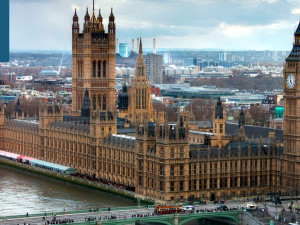
BoE cool about Covid Bankruptcies
Morning mid-market rates – The majors
10th May: Highlights
- Multinationals repay emergency loans confirming their confidence
- New jobs data brings a surprise but not in a good way
- ECB must accept a revised inflation target. Can Germany agree
Bailey sees end of furlough as a positive
Governor Andrew Bailey believes that the pace at which the economy is emerging from the Pandemic will be sufficient to ensure that the number of business bankruptcies will be controllable.
Following comments made by departing Chief Economist Andrew Haldane last week it is fairly clear that he is not in agreement with how the Bank Intends to manage monetary policy going forward, perhaps more pertinently he has a different idea of what is to come as the economy opens up completely.
Haldane has been the most bullish of the members of the MPC during his tenure. He was the first to predict a V-shaped recovery although at the time this had nothing to do with the rollout of a vaccination.
At the most recent of the MPC, Haldane’s penultimate, he voted to reduce the size of the Bank’s bond buying facility claiming a concern over inflation.
Reports released recently show that the third lockdown inflicted less damage than had first been predicted.
Putting the achievements of the vaccination programme to one side for a moment, following the science over the reopening of schools coupled with the level of ingenuity shown by several sectors of business since restrictions began to be eased have meant that the economy has been set on a positive course.
This allowed the MPC to raise its predictions for full year GDP.
The Chairman of the Confederation of British Industry agrees with Haldane that the economy is like a coiled spring just waiting for the green light to release pent up demand.
Haldane’s concern is that the release of pent-up demand and the inability of the supply side to keep up may let the inflation genie out of the bottle and once out, it may prove impossible to control.
Last week, the pound was mostly on the front foot managing to climb just above the 1.40 level for the dollar. There are predictions being made by several major banks that the target of 1.50 could be reached in the coming months. Of course, a lot depends on the actions of the Federal Reserve.
Last week, the pound closed at 1.3982. In trading in Asia as the new week begins, Sterling has made a new high of 1.4044.
Considering your next transfer? Log in to compare live quotes today.
Dollar suffers as NFP massively underdelivers
With several analysts expecting a return in excess of one million new jobs being created, in the end the figure was just 266k. Perhaps more significantly the figure for March was revised down from 916k to 770k.
Were the March data to have been more accurate, the frenzy that ensued would have been far less.
There have been questions over the accuracy of the report for some time. Given that the level of revisions is often quite high, clearly magnified over the past few months, basing economic forecasts on the data is becoming impossible.
That is one reason why the Fed uses a three-month moving average. This produces a far more accurate and reliable figure.
Over the past week, more than a dozen States withdrew the handouts they had been offering to those who had lost their jobs due to the Coronavirus Pandemic, but it is likely to be a couple of months before the outcome is seen.
While 266k is a respectable number in the grand scheme, it does mean that unless there is either an unforeseen blip or some monstrous adjustment that predictions for the level of employment at the end of the year could also be inaccurate.
One explanation for the inaccuracy of the NFP data could be that employers are struggling to find the right kind of workers. It is often the case in such a downturn, no matter the reason, for the most skilled to be snapped quickly, while the less employable return to the employment queue.
The dollar index was hit hard on Friday afternoon, retreating to a low of 90.19 from which it barely recovered to close at 90.22, It is now fairly certain that the greenback will remain in the doldrums until the FOMC provides a reliable plan for tackling inflation or takes some action along those lines.
ECB expected to move the goalposts
Friday’s burst higher was a result of the disappointing U.S. data and will dissipate fairly quickly.
The Governor of the Bank of Finland, Olli Rehn, told the FT that he believes that the ECB should follow the Fed’s lead in setting a less rigid target for inflation.
This would ensure that long-term inflation levels show a degree of consistency.
Ever since its inception, the ECB has mirrored the Bundesbank and has been concerned about inflation almost at the expense of economic growth.
Clearly Rehn is not a fan. The ECB has failed to hit its inflation target for most of the past ten years. Rehn believes a period of higher inflation can be absorbed even as employment begins to rise,
The ambiguity of the wording of the inflation target means that in fact the ECB’s de-facto inflation target is in fact between 1.6% and 1.8%.
It is hard to believe that despite all the contortions the market has gone through in the past decade or even decade and a half, that it will conduct its first policy review in eighteen year this Autumn.
It is widely expected that raising the inflation target will be at the centre of any changes.
Philip Lane, the Central bank’s Chief Economist agrees with Rehn in commenting that there is a very strong logic to following the FOMC’s lead in being more flexible.
Last week the euro rallied strongly against a weaker dollar. It reached a high of 1.2171, closing at 1.1.2164. It remains to be seen how long this rally can continue, if at all.

About Alan Hill
Alan has been involved in the FX market for more than 25 years and brings a wealth of experience to his content. His knowledge has been gained while trading through some of the most volatile periods of recent history. His commentary relies on an understanding of past events and how they will affect future market performance.”



